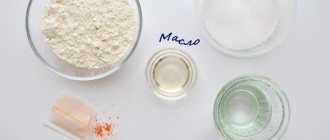Levomycetin drops are an affordable drug for combating pathogenic microflora on the surface of the eyes and under the conjunctiva. The drug does not destroy microorganisms, but transfers them to an inactive state by blocking protein metabolism . Bacteria stop spreading waste products and exotoxins - foreign objects that cause an inflammatory reaction - into the surrounding tissues. Although the components of the drops do not completely destroy the microflora, they can significantly improve the general condition of the patient .
It is important to note that bottles of eye drops are often stored carelessly : dust rich in microorganisms and other unwanted particles settle on them in bags and cosmetic bags. In this case, we mostly have to talk not about the benefits of the medicine, but about the consequences that result from improper handling of its bottle.
To obtain the full medicinal effect and neutralize negative factors, it is important to choose and store eye drops correctly.
Shelf life of Levomycetin
Levomycetin is a broad-spectrum antibiotic. Release forms:
- Tablets Levomycetin Actitab. Shelf life - 2 years.
- Capsules . Shelf life – 2 years.
- Powder . Provided the packaging is intact, the shelf life is 4 years. The prepared solution is stored for no more than 2 days.
- Ointment . Shelf life – 2 years.
- Eye drops . Provided the packaging is intact, the shelf life is 2 years.
- Levomycetin solution , if stored correctly, the juice shelf life is 5 years.
- Vaginal suppositories . Shelf life – 2 years.
Shelf life is indicated on the carton below.
Suppositories are most susceptible to temperature changes; at elevated temperatures they melt. Capsules, tablets and ointment change their structure with temperature changes. The factory solution and powder behave more stably, provided the packaging is intact.
Levomycetin in any form can be used 5-10 days before the expiration date. The chemical composition does not change by this time.
Upon expiration:
- tablets and capsules change color and begin to crumble;
- the powder sticks together and becomes of uneven consistency;
- the ointment changes its structure and an unpleasant odor appears;
- eye drops and solution may precipitate and evaporate, the color of the solution becomes cloudy;
- suppositories may become deformed and become sticky.
General features of counterfeit goods:
- poor quality packaging;
- lack of expiration dates and serial numbers;
- poorly printed text;
- absence of the GOST sign;
- the appearance of the medicine differs from that stated in the instructions.
Levomycetin in any form cannot be used after the expiration date. The chemical elements that make up the drug begin to disintegrate. As a result, the drug loses its medicinal properties.
The darkened bottle of the factory solution and the sealed packaging of the injection powder allow Levomycetin to be stored for a long time. At the same time, the chemical composition of the drug does not change for a very long time. Tablets, capsules, ointments, drops and suppositories are more susceptible to external influences, but if properly stored in the original packaging, the drug can be stored for a fairly long period of time. A solution made from powder for injection loses its medicinal properties quickly due to interaction with air and water.
Levomycetinum
Home Medical Encyclopedia Medicines in alphabetical order L
Synonyms: Chloramphenicol, Chloroid, Alphycetin, Berlitsetin, Biofenicol, Hemycetin, Chlornitromycin, Chlorocycline, Chloromycetin, Chloronitrin, Chloroptik, Klobinekol, Detreomycin, Galomycetin, Leukomyin, Paraxin, Syntomycetin, Typhomycetin, Typhomyin, etc.
A synthetic substance identical to the natural antibiotic chloramphenicol, which is a waste product of the microorganism Streptomycesvenezuelae.
Pharmachologic effect. Levomyietin is a broad-spectrum antibiotic; effective against many gram-positive and gram-negative bacteria, rickettsia, spirochetes and some large viruses (the causative agents of trachoma /an infectious eye disease that can lead to blindness/, psittacosis /an acute infectious disease transmitted to humans from birds/, inguinal lymphogranulomatosis /IV venereal disease - disease sexually transmitted; characterized by inflammation of the inguinal lymph nodes followed by the formation of bleeding ulcers/etc.); acts on bacterial strains resistant to penicillin, streptomycin, and sulfonamides. In normal doses it acts bacteriostatically (prevents the growth of bacteria). Weakly active against acid-fast bacteria, Pseudomonas aeruginosa, clostridia and protozoa.
The mechanism of the antimicrobial action of levomyetin is associated with a violation of the synthesis of microbial proteins.
Drug resistance to the drug develops relatively slowly, and, as a rule, cross-resistance to other chemotherapeutic agents does not occur.
Levomycetin is easily absorbed from the gastrointestinal tract. After oral administration, the maximum concentration in the blood is created after 2-3 hours; Within 4-5 hours after a single dose of treatment, a therapeutically active concentration remains in the blood, then a significant decrease in concentration occurs. The drug penetrates well into organs and body fluids, through the blood-brain barrier (the barrier between blood and brain tissue), through the placenta, and is found in breast milk. Therapeutic concentrations of chloramphenicol, when administered orally or topically, are created in the vitreous body (the transparent mass that fills the cavity of the eyeball), the cornea (the transparent membrane of the eye), the iris, and the aqueous humor of the eye; The drug does not penetrate into the lens. Levomycetin is well absorbed when administered rectally (through the rectum). It is excreted mainly in the urine mainly in the form of inactive metabolites (metabolic products); partially - with bile and feces. In the intestine, under the influence of intestinal bacteria, hydrolysis (decomposition with the participation of water) of chloramphenicol occurs with the formation of inactive metabolites.
Indications for use. Lsvomiietin is used for typhoid fever, paratyphoid fever, generalized forms of salmonellosis, brucellosis, tularemia, meningitis, rickettsinosis, and chlamydiasis.
For infectious processes of other etiology (Causes) caused by pathogens sensitive to the action of chloramphenicol, the drug is indicated in case of ineffectiveness of other chemotherapeutic drugs.
Levomycetin is also used topically for the prevention and treatment of eye infectious diseases (conjunctivitis - inflammation of the outer membrane of the eye, blepharitis - inflammation of the edges of the eyelids, etc.).
Method of administration and dose. Before prescribing a drug to a patient, it is advisable to determine the sensitivity to it of the microflora that caused the disease in this patient. Levomycetin is used orally in tablets and capsules, topically in the form of aqueous solutions and ointments.
Orally in the form of tablets or capsules, usually taken 30 minutes before meals (in case of nausea or vomiting, an hour after meals). Single dose for adults - 0.25-0.5 g; daily dose - 2 g. In especially severe cases (typhoid fever, peritonitis / inflammation of the peritoneum / etc.), you can prescribe the drug in a dose of up to 4 g per day (under the strict supervision of a doctor and control over blood condition and kidney function). The daily dose of tablets and capsules is taken in 3-4 doses. Long-acting tablets are prescribed only to adults: in the first days of illness, 1.3 g (2 tablets) 2 times a day; after normalization of body temperature, 0.65 g (one tablet) 2 times a day. For children, chloramphenicol is prescribed in the form of tablets or capsules. A single dose of the drug for children under 3 years of age is 10-15 mg/kg, from 3 to 8 years - 0.15-0.2 g; over 8 years - 0.2-0.3 g; taken 3-4 times a day. The course of treatment with chloramphenicol is 7-10 days. According to indications, if it is well tolerated and there are no changes in the hematopoietic system, treatment can be extended to 2 weeks. If nausea and vomiting develop while taking the drug, take it 1 hour after eating.
Locally, chloramphenicol can be used in the form of liniment (1-10%) for the treatment of trachoma (an infectious eye disease that can lead to blindness), pustular skin lesions, furunculosis (multiple purulent inflammation of the skin), burns, cracks, etc.
In the treatment of conjunctivitis, keratitis (inflammation of the cornea), blepharitis, 1% liniment or 0.25% aqueous solution (eye drops) can be used. Dressings with levomyetin liniment are used for purulent wound infections.
Side effect. When treated with chloramphenicol, dyspepsia (nausea, vomiting, loose stools), irritation of the mucous membranes of the mouth, pharynx, skin rash, dermatitis (skin inflammation), rash and irritation around the anus, etc. may be observed.
It should be taken into account that chloramphenicol can have a toxic (damaging) effect on the hematopoietic system (causes reticulocytopenia /a decrease in the number of reticulocytes - blood cells in the blood/, granulocytopenia /a decrease in the content of granulocytes in the blood/, sometimes a decrease in the number of erythrocytes /blood cells that carry oxygen/ ). In severe cases, aplastic anemia is possible (a decrease in hemoglobin content in the blood due to inhibition of the hematopoietic function of the bone marrow). Severe complications from the hematopoietic system are often associated with the use of large doses of chloramphenicol. Young children are most sensitive to the drug.
Large doses of chloramphenicol can cause psychomotor disorders (psychomotor agitation - increased motor and speech activity, usually followed by a reverse reaction), confusion, visual and auditory hallucinations (delusions, visions that acquire the character of reality), decreased hearing and vision acuity.
The use of chloramphenicol is sometimes accompanied by suppression of intestinal microflora, the development of dysbiosis (disturbances in the composition of the body's normal microflora), and secondary fungal infection.
When using chloramphenicol in the form of eye drops and ointments, local allergic reactions are possible.
Treatment with chloramphenicol should be carried out under the control of the blood picture and the functional state of the patient’s liver and kidneys.
Contraindications. Uncontrolled prescription of chloramphenicol and its use in mild forms of infectious processes, especially in pediatric practice, should not be allowed.
Levomycetin should not be prescribed for acute respiratory (breathing) diseases, sore throat and for prophylactic purposes.
Levomycetin is not prescribed together with drugs that inhibit hematopoiesis (sulfonamides, pyrazodone derivatives, cytostatics). Due to possible changes in the metabolism of a number of drugs, chloramphenicol is not recommended for use in combination with diphenin, neodicoumarin, butamide, and barbiturates.
Levomycetin is contraindicated in case of inhibition of hematopoiesis, individual intolerance to the drug, skin diseases (psoriasis, eczema, fungal infections), during pregnancy and in newborns.
The drug should be prescribed with caution to patients with a history of allergic reactions.
Release form. Tablets of 0.25 and 0.5 g; film-coated tablets, 0.25 g; chloramphenicol tablets of prolonged (long-term) action, containing 0.65 g of the drug (two-layer tablets, the outer layer contains 0.25 g of chloramphenicol, the inner layer - 0.4 g) in a package of 10 pieces; in capsules containing 0.1; 0.25 and 0.5 g of chloramphenicol, in a package of 10 or 16 capsules; 0.25% solution (eye drops) in 10 ml bottles. For external use as an antiseptic (disinfectant), a ready-made solution containing chloramphenicol 2.5 g, boric acid 1 g, ethyl alcohol 70% up to 100 ml is also used; chloramphenicol alcohol solution 0.25%; 1%; 3% and 5%.
Storage conditions. List B. In a place protected from light.
| print version | This information is not a guide to self-treatment. A doctor's consultation is required. |
How to store Levomycetin at home
Levomycetin in any form is stored at a temperature not exceeding +25 ° C out of the reach of children.
The drug should be placed in a place protected from direct sunlight. Best of all, in a specially designated first aid kit. When opening, be sure to indicate the date of first use. When the temperature rises, the medicine should be moved to a shelf in the refrigerator door.
Levomycetin should not be stored:
- In bathroom;
- on the balcony or in the storage room;
- near heating devices;
- in the freezer and general chamber;
- next to hygiene products and food products.
Analogues of Levomycetin:
- Levovinisole;
- Chloramphenicol;
- Levomekol;
- Colbiocin;
- Sintomycin;
- Gentamicmn;
- Nolitsin;
- Cefuroxime.
Rules for storing the drug in pharmacies and clinics
According to the order of the Ministry of Health and Social Development of the Russian Federation N 706n “On approval of the Rules for the storage of medicines”, Levomycetin is stored:
- in the form of tablets, capsules and powder. In a specially designated rack next to similar drugs at a temperature not exceeding +25 °C;
- in the form of ointments, eye drops and suppositories. In the refrigerator compartment at a temperature not exceeding +15 ° C;
- in the form of a factory solution in a special plastic or iron container.
Large quantities of low-quality goods are destroyed in factories that have permission. This is regulated by SanPinN 2.1.7.2790. In small quantities, disposal occurs in a pharmacy or hospital setting. The solution, eye drops, powder, capsule tablets are dissolved in water and poured out. The ointment and candles are melted and disposed of in special chambers.
Regulating the Federal Law N61 “On the Circulation of Medicines” dated April 12, 2010, Levomycetin is transported, depending on the form of release, in specially designed boxes. Forwarders must have an agreement and license to transport medicines.
Employees of clinics and pharmacies are responsible for the safety of medicines. If drugs become damaged, they are required to dispose of them in accordance with the regulations. The sale and use of expired goods is punishable by law.
Levomycetin Renewal
- Hypersensitivity to chloramphenicol or other components of the drug;
- inhibition of bone marrow hematopoiesis;
- acute intermittent porphyria;
- deficiency of glucose-6-phosphate dehydrogenase;
- liver and/or kidney failure;
- pregnancy;
- breastfeeding period;
- children under 3 years of age and weighing less than 20 kg.
Side effect
Gastrointestinal disorders: dyspepsia, nausea, vomiting (the likelihood of development is reduced when taken 1 hour after meals), diarrhea, irritation of the oral mucosa and pharynx, dermatitis, dysbacteriosis (suppression of normal microflora).
Blood and lymphatic system disorders: reticulocytopenia, leukopenia, granulocytopenia, thrombocytopenia, erythrocytopenia, aplastic anemia, agranulocytosis.
Nervous system disorders: psychomotor disorders, depression, confusion, peripheral neuritis, visual and auditory hallucinations, headache.
Immune system disorders: skin rash, angioedema.
Visual disorders: optic neuritis, decreased visual acuity.
Hearing and labyrinthine disorders: hearing loss.
Infectious and parasitic diseases: secondary fungal infection.
Overdose
Symptoms: suppression of bone marrow hematopoiesis, gastrointestinal disorders, liver and kidney damage, neuropathy (including the optic nerve) and retinopathy.
Treatment: hemosorption, symptomatic therapy.
Carefully
Early childhood; previous treatment with cytotoxic drugs or radiation therapy.
Interaction with other drugs
It suppresses the enzyme system of cytochrome P450, therefore, when used simultaneously with phenobarbital, phenytoin, and indirect anticoagulants, a weakening of the metabolism of these drugs is observed, a slower elimination and an increase in their concentration in plasma.
Reduces the antibacterial effect of penicillins and cephalosporins.
When used simultaneously with erythromycin, clindamycin, lincomycin, a mutual weakening of the effect is observed due to the fact that chloramphenicol can displace these drugs from the bound state or prevent their binding to the 50S subunit of bacterial ribosomes.
Simultaneous administration with drugs that inhibit hematopoiesis (sulfonamides, cytostatics), affecting metabolism in the liver, with radiation therapy increases the risk of side effects.
When taking ethanol simultaneously, a disulfiram-like reaction may develop.
When prescribed with oral hypoglycemic drugs, their effect is enhanced (by suppressing metabolism in the liver and increasing their concentration in plasma).
Myelotoxic drugs enhance the hematotoxicity of the drug.
*for more details, see the instructions for medical use of the drug LP-004481










